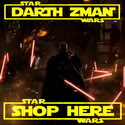skip to main |skip to sidebar
Customer Review:

The three dSLRs in the Canon consumer line-up (60D, 7D, T2i) all share a number of specifications and features, a similar exposure metering system, as well as an image sensor that is very similar, and all with 18 megapixels. Due to this, the image quality and ISO performance of these three cameras will be nearly identical, and all are capable of taking high quality images. So why choose the 60D over the T2i (550D) or the 7D?
-Exterior buttons and controls: Greater ease and control of changing camera settings as you work vs. the T2i. The 60D has nearly every control one needs on the exterior of the camera and it has the rear dial and top LCD display screen that are not on the T2i. Any other controls can be easily accessed with the Q button and menu or in the other menus on the rear LCD monitor. The top buttons of the 60D set only one setting each, so this is less complicated than the multiple-setting buttons of the 7D. Canon has removed the WB button that the 7D and 50D have, but that isn't a big deal - use the Q Menu. Another change is that the Multi-controller has been moved from the thumb joystick like the 7D and 50D and placed in the middle of the rear Quick-control dial. This doesn't change how it functions, and should just be a matter of getting used to the difference.
-Menus and custom functions: Greater control over customizing how the camera functions vs. the T2i. The 60D has many more Menu and Custom Function settings than the T2i and nearly as many as the 7D. These settings allow you to customize the operation, function, and controls of the 60D to work how you want them to, including things like exposure increments, peripheral illuminations correction for lenses (fixes dark corners) and customizing which button does what.
-Auto focus systems: The 60D shares a similar autofocus system to the T2i and the previous 50D, with 9 focus points and three auto focusing modes. However the 9 AF points of the 60D are more sensitive than those of the T2i: all are cross-type in the 60D, only the center is cross-type in the T2i. The 60D autofocus system is much less complex than the sophisticated AF system of the 7D with its 19 AF point system and its additional Zone, Spot, and Expansion focus modes - not to mention the custom settings of the 7D which will allow one to customize how the AF system works. However, if you are not an avid sports photographer, a wildlife shooter, or someone who understands, needs, and will use the elaborate features of the 7D AF system, then this shouldn't dissuade you from the 60D.
-Exposure Metering: The three cameras all share the latest 63-zone exposure metering system and 4 metering modes. That means they will all determine the exposure virtually identically and enable you to take properly exposed photos in most every situation, including difficult back-lit scenes. The size of the areas metered for Partial and Spot metering vary slightly between the cameras, but that isn't anything critical.
-ISO: Since the 60D shares a very similar sensor with the other two cameras, its ISO sensitivity and performance at high ISO settings is virtually the same. But don't take my word for it, don't be swayed by pixel peepers on forums, instead check out the camera sensor tests at dxomark to verify this.
-Continuous Shooting Speed: While the 60D can't shoot a blazing 8 frames per second like the 7D, it can shoot a respectable 5.3 fps which is generally a more useful rate, and is a higher rate than the T2i rate of 3 fps.
-Size and Weight: The 60D is larger and heavier than the T2i but smaller and lighter than the 7D. It is a very nice size, weight, feel, and design that should be comfortable for most users.
-Construction: The 60 has relatively strong construction of aluminum and polycarbonate. It is better built than the T2i but not as strong as the 7D's magnesium alloy frame. The 60D also has some amount of weather sealing - more than the T2i, less than the 7D. But for most users, including even those using the camera daily or in travel situations, the construction of the 60D is far more than good enough, strong enough, durable enough, and weather resistant enough.
-Articulating Rear LCD Screen: The 60D is the only current Canon dSLR with this handy feature. This may prove useful for videographers, as well as for setting up compositions while the camera is on a tripod, for macro use, or for using it from unusually low or high vantage points. There is also an electronic level, visible in the viewfinder, rear LCD, or top LCD.
-Viewfinder: The 60D has a large, bright viewfinder with 96% coverage of the actual resulting image, a tiny bit better than the T2i but not quite as nice as the nearly 100% view of the 7D.
-Wireless Flash: Like the 7D, the 60D incorporates wireless flash triggering. It allows you to trigger multiple off camera flashes at different output levels. The T2i does not have this feature.
-Battery: The 60D has a larger batter vs. the T2i, thus allowing longer periods of shooting before having to recharge. The 60D uses the LP-E6 battery like the 7D, which is a nice feature as this battery can often last through a full day of shooting.
-Processor: The 60D shares the same Digic 4 processor as the T2i. The 7D has dual Digic 4 processors. However, for most general or even demanding photography needs, the single processor is more than sufficient.
-Memory Card: The 60D uses the SD memory card like the T2i, not the CF card of the 7D. This doesn't affect anything except perhaps your collection of CF cards.
-Additional processing features: The 60D has added features such as the creative filters (toy camera, miniature tilt-shift effect) and internal file processing capabilities (RAW image processing, image resizing) that the other two cameras do not have. This is not critical as these operations can typically be more easily done in batches on a computer.
-Lack of AF Microadjustment: Many are disappointed that the 60D does not include the ability to micro-adjust the focus so that each lens is completely accurate. However, if you have a focus issue, send your camera and/ or lenses to Canon while under warranty and ask them to calibrate them. The 7D has this feature, the T2i does not.
-Locking Mode Dial: This is a new feature for a Canon dSLR that keeps the Mode dial from accidentally rotating. A nice touch only on the 60D.
-Full HD Video: And of course the 60D has full HD video, just like the other two cameras.
-A Note to Strobists: The 60D does not have a PC sync flash socket to plug in PC sync cords. The 7D has this, the T2i does not.
-Ease of operation: While beginners may find all the buttons, controls, and menus of any dSLR difficult and confusing at first, the controls and menus of the 60D are all quite intelligently designed and straightforward for the advanced user. If you'd like to get up and running with the 60D quickly and competently, while you are waiting for user's guides such as Canon EOS 60D: From Snapshots to Great Shots or Magic Lantern Guides: Canon EOS 60D Multimedia Workshop to become available, be sure to check out an eBook I put together called Your World 60D on the "Picturing Change" Wordpress blog. It describes how to set up the Menu settings and Custom Function settings, and explains how, when, and why to use the settings, controls, and features of the 60D in everyday still photography use, including aperture priority and shutter priority modes. Plus it has information on exposure, composition, using depth of field, and basic video settings. It should help you get the most out of the 60D.
The 60D is an excellent camera for those wanting to upgrade from the Rebel line, for the advanced dSLR user who wishes to take advantage of all the features and customizations options of the 60D, and for the first-time dSLR buyer who is knowledgeable of camera controls or eager to learn. Its size, durability, and features will suit those who wish to use it for both general use and for travel, and its image quality and performance is exceptional for a camera at this price.
++++++++++
First, I'm not a professional photographer. I bought the 60D because I was not happy with the quality of even the best point and shoots out there. The 60D offered a smaller and more lightweight body than the 7D. The 60D has a swivel screen which is fantastic when doing video. Trust me, it makes a huge difference. I don't photograph sporting events, so 5.3fps instead of 8fps of the 7D was fine for me. I bought a Canon 24mm 2.8 prime lens to keep the overall size of the camera reasonable for my needs. I take family shots, and closer up images, so a zoom just wasn't necessary. Image quality - Excellent! A prior reviewer said it takes the same images as the 7D, which is an extremely well reviewed and quality camera. So you get this camera for $300 or more less, the same exact image quiality, and more bells and whistles. Autofocus is very fast. Like night and day compared to any point and shoot. I like the dial lock as I was always moving the wheels on any point and shoots I've owned. No autofocus in video mode, which is a true negative. I hope they upgrade that in a future body. That said, you can manual focus during video which is silent and more accurate. Lots of talk about this being plastic vs. metal. Don't pay any attention to it. This thing feels great. Nice and solid. Plastics today can be made even stronger than metal, so the whole plastic vs. metal thing should not even enter your mind, not for a second. You get a camera that weighs less!! Try hanging a 4 pound piece of steel around your neck for 8 hours and see how fun it is. Lighter and smaller is exactly what people are looking for. All in all, this camera rocks. Excellent image quality in a rock solid body with a ton of bells and whistles. Well worth the money.


















0 ความคิดเห็น:
แสดงความคิดเห็น
หมายเหตุ: มีเพียงสมาชิกของบล็อกนี้เท่านั้นที่สามารถแสดงความคิดเห็น